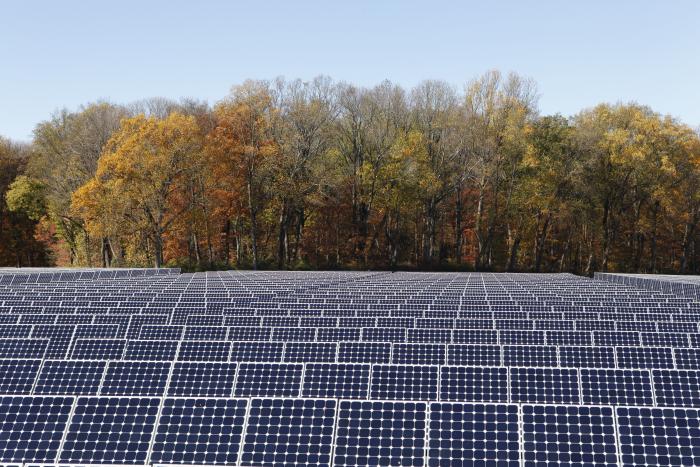
Editors Note: In 2020, SunPower announced the completion of the strategic spin-off of its manufacturing division into a separate business named Maxeon Solar Technologies, Ltd. As a result, SunPower has expanded its offerings to drive future growth. The SunPower Equinox® system now offers multiple panel options, including front- and back-contact panels, all of which are responsibly and rigorously quality tested to provide the best energy solution for your home.
On Earth Day numerous heads of state and other dignitaries will come together in New York for a signing ceremony for the historic COP21 agreement, formally turning the page to implementation.
The climate change negotiations at the end of 2015 in Paris brought about a sweeping agreement by nearly 200 nations to reduce greenhouse gas emissions. Few thought such an agreement was possible just a year ago, and SunPower is thrilled to be helping public and private sector leaders in the United States and across the globe achieve their clean energy goals.
These leaders recognize that our fight against global warming must begin with a consensus approach built around infrastructure and action. We were reminded of this when U.S. policymakers extended the investment tax credit for solar late last year, removing a barrier for millions of new customers who have yet to realize solar’s full potential. On the state level, California’s decision to approve a constructive net energy metering policy reinforces the tangible momentum that we’re seeing in local communities across the state and beyond.
Consider the following: Despite a decline in fossil fuel prices in 2015, the world added an unprecedented 121 gigawatts of clean energy capacity. In the U.S., additions in solar power capacity exceeded natural gas for the first time ever. By 2020, it is expected that the U.S. will be installing at least 21 GW annually compared to 7.5 GW installed in 2015.
Cost continues to be an advantage. According to an analysis by Bloomberg New Energy Finance, the price per watt for solar in 1977, seven years after the first Earth Day, averaged more than $76 per watt. Today, it averages around $2 per watt.
Private sector leading the way to solar transition
As I explained in a San Jose Mercury News op-ed piece about the value of solar to businesses, the private sector is arguably three steps ahead in leading the global transition to solar.
Companies such as Apple, Macy's, Bed Bath & Beyond, Johnson & Johnson and Walmart are already demonstrating solar’s near-term economic and environmental benefits by embracing it as a core component of their operations.
Higher education is also a bellwether. Beyond cultivating the next generation of researchers and innovators, Stanford University, one of a number of colleges and universities that have installed SunPower® solar systems, set a goal to cut greenhouse gas emissions by 68 percent by the end of 2016 through a campus-wide solar initiative. Going forward, the university projects that it will save a total of $420 million by 2050.
However, while SunPower is serving residential, commercial and power plant customers every day, we must not forget that too many businesses, homes and utilities lack access to the cleanest possible forms of energy. By continuing to break down regulatory and other barriers, we will realize efficiency dividends and uses of solar that we couldn’t have imagined just a decade ago.
Albert Einstein said it best: “The world as we have created it is a process of our thinking. It cannot be changed without changing our thinking.”
Across the globe, the numbers imply that a change in thinking is underway. We are in the midst of the greatest energy transformation since the early 20th century. However, our work is far from finished, and it will require ongoing collaboration among industries, governments and consumers to ensure that we implement the COP21 agreement in a manner that achieves shared goals while laying a scalable and sustainable infrastructure for our clean energy future.
When we look back on Earth Day 2016 decades from now, it’s likely that we’ll remember it and the COP21 signing as tipping points that helped make possible a cleaner, healthier future for our planet.
©2016 SunPower Corporation. All Rights Reserved. SUNPOWER and the SUNPOWER logo are registered trademarks of SunPower Corporation in the U.S. and other countries as well.

